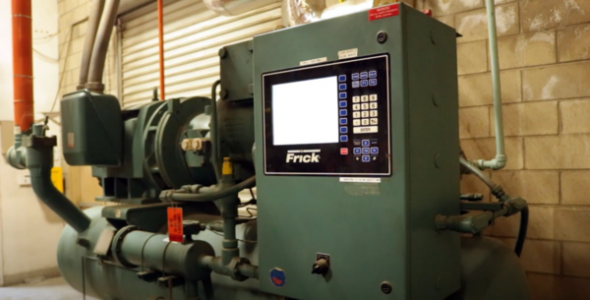Should I Hire a Contractor or Keep it In-House? | Part 7: Other Inspection Frequencies

Eli Macha presented a technical paper at the 2021 RETA National Conference titled IIAR 6: Should I Hire a Contractor or Keep it In-House? This blog series includes excerpts from his technical paper.
While a facility implementing daily rounds and annual inspections and tests will be very near compliance with IIAR 6, there are several other frequencies which need to be addressed. Here are a few examples:
| Frequency | Equipment | Activity |
| Weekly | Pump | Listen for abnormal sound[1] |
| Weekly | Condenser | Verify water supply is functional[2] |
| Monthly | Compressor | [Observe the] Operation of unloader[3] |
| Monthly | Evaporator | Verify evaporator is free from excessive ice buildup[4] |
| Semi-annual | Evaporator | Visually inspect drain pan to ensure it is free of obstructions[5] |
| Semi-annual | Pressure Vessel | Visually inspect for excessive vibration or movement when liquid is being supplied[6] |
Whether or not these activities should be outsourced varies greatly from facility to facility. A quarter of facilities complete these types of inspections in-house, 43% only hire out these inspections, and the remaining 32% work together with their contractor to cover these inspections. While some contractors provide little documentation for their preventative maintenance (PM) work, other contractors may provide a monthly inspection checklist along with their scheduled PM. This type of documented inspection may cover a host of these intermediate frequency inspections.
While most daily inspection requirements revolve around the machinery room/area, a lot of these other inspection requirements are physically located elsewhere in the refrigeration system. To address this issue, one multi-facility cold storage company added some of these inspection items to their daily temperature log. While the operators enter a room to take readings of the room and pulp temperatures, they also perform a quick inspection of the ammonia piping, evaporators, and vessels. Finding the right blend of in-house vs contracted work may take time, but after some tweaking, a facility can find what works best for them.
One final note on frequencies other than daily and annual: there appears to be a lack of industry awareness regarding 5-year Mechanical Integrity Audits (MIAs). IIAR 6 requires, “Every fifth (5th) year, at a minimum, the annual inspections shall be conducted by a qualified inspector who shall not be influenced by the facility’s record keeping, operations, maintenance, or management. This person shall not present a conflict of interest and shall report instances of deficiencies.”[7] Since IIAR avoided making this activity overly restrictive, there are various methods for adhering to this requirement:
- This requirement is met if facilities are already having annual inspections performed by a refrigeration contractor.
- Multi-facility companies may desire to conduct the 5-year inspections internally. To avoid undue influence, the company can have a qualified inspector from a different facility conduct the 5-year inspections.
- A facility may hire a refrigeration contractor or consultant to conduct a 5-year Mechanical Integrity Audit.
While there are two other methods for complying with the 5-year requirement of ANSI/IIAR 6-2019 §5.4.2, the 5-year Mechanical Integrity Audit seems to be the premiere option. The 5-year MIA differs from the other options in two important ways: the activity is typically performed by an engineer and the activity includes an audit of mechanical integrity records. The lack of awareness regarding this unique activity became apparent when 93% of respondents indicated 5-year MIAs are being conducted. Given that the mechanical integrity records of the facilities surveyed were available, the author determined that this figure was incorrect. See Appendix N for the comparison of those facilities who indicated the 5-year MIAs are being completed compared to the number of facilities who have actually completed the activity. Of the respondents who answered that 5-year MIAs are being completed, this was incorrect for 62% of them. Note: this is not to say that these facilities are out of compliance with ANSI/IIAR 6-2019 §5.4.2. While the Contractor Involvement Survey was not intended to gauge awareness of 5-year MIAs, it is a curious finding, and the industry should consider how to remedy this situation.
[1] Ibid., Pump Table 7.1 Inspection Item (c)
[2] Ibid., Condenser Table 8.1 Inspection Item (l)
[3] Ibid., Compressor Table 6.1 Inspection Item (x)
[4] Ibid., Evaporator Table 9.1 Inspection Item (g)
[5] Ibid., Evaporator Table 9.1 Inspection Item (p)
[6] Ibid., Pressure Vessel Table 10.1 Inspection Item (i)
[7] Ibid., §5.4.2
The previous blogs in this series are available in the following links:
- Part 1: Introduction
- Part 2: Research Methodology
- Part 3: Completing Daily Rounds In-House
- Part 4: Outsourcing Annual Inspections
- Part 5: System Oversight
- Part 6: Miscellaneous Maintenance

Leave a Reply